Knowledge
Ulla Engestrom, CEO & Founder, ThingLink, shares insights into the use of Virtual Reality and 360° videos for educational solutions
VR in the classroom supports contextual and embodied learning. 360 lessons and field trips are particularly suitable for learning about complex systems and global issues such as human rights, gender equality, climate change, population growth and food production.
Published
7 years agoon
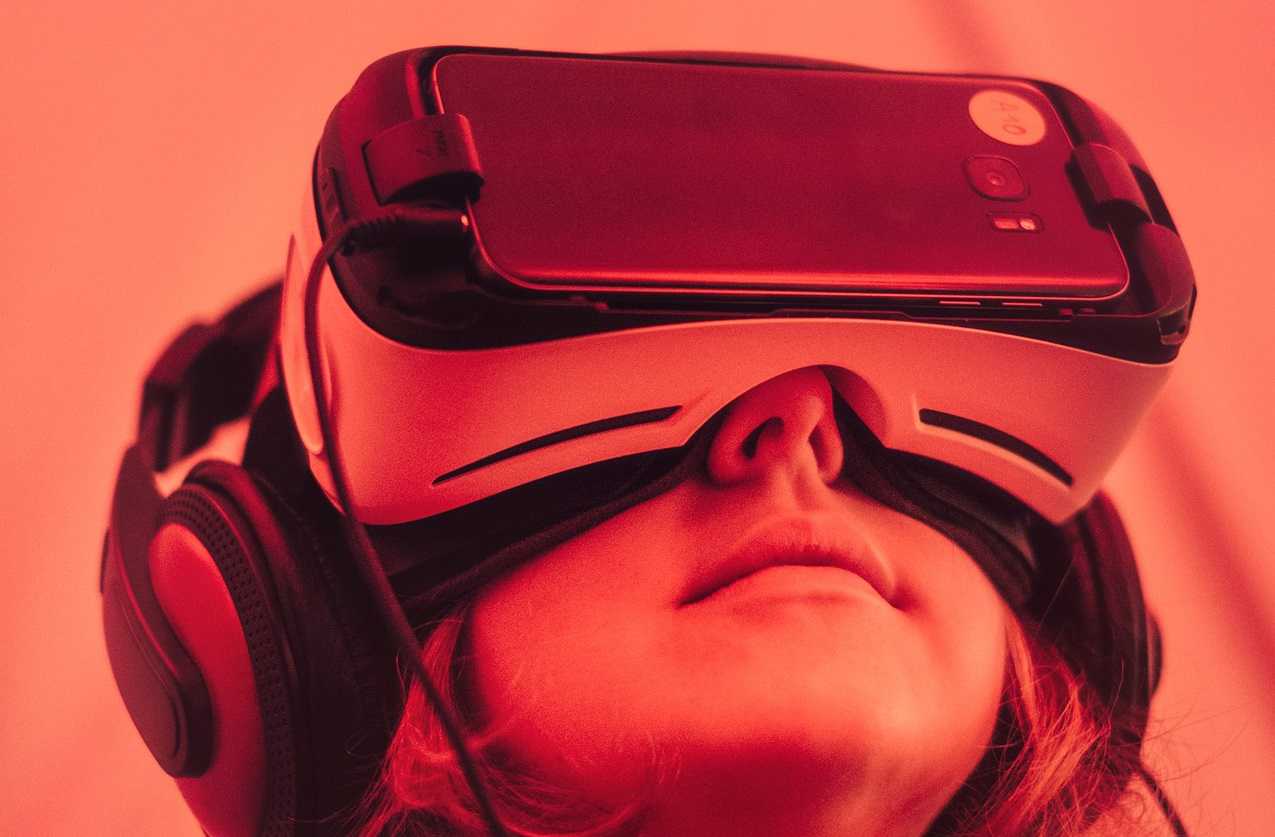
What is the need for professional development of VR in the classroom?
The goal of VR in the classroom is to support the development of higher order thinking skills (HOTS) that in education are best applied to solving real-world issues. Without a framework, students will just zip around in a 360 environment not knowing what they are supposed to learn, which is a waste of everybody’s time and money. Professional development for integrating VR in education is thus as important as the technology itself.
What is the difference between 360 Videos and Virtual Reality?
It is the view mode: Regular 360 images and 360 videos can be viewed on desktop and mobile devices. All you need to do is to move your phone or swipe the image to look around. Services such as YouTube and ThingLink also offer a mobile VR view. This means that if you have a headset such as Google Cardboard or Samsung Gear VR, you can put your phone inside the headset, select a stereoscopic view of the image or video, and look around the 360 image or video by moving your head.
Can virtual reality be used in the classroom only using special hardware?
Mobile VR and console VR such as Oculus or HTC Vive are two different things, and depending on what you choose, this has a big impact on costs. Since hardware develops fast, our recommendation for classrooms is to save money and use the devices that are easily available. For example, if students have tablets or they can access smartphones, they can use the free Google Streetview app to take 360 photos, and use ThingLink to augment the images with additional information. Or, a school can purchase one consumer 360 camera such as Ricoh Theta and share it with multiple classrooms. They can upload the images to ThingLink and edit them with laptops or tablets. For mobile virtual reality viewing there are lots of headsets available for under $30. For school use we do not recommend cardboard headsets for hygiene reasons. Plastic is easier to keep clean.
How will virtual reality help students learn better and more?
VR in the classroom supports contextual and embodied learning. 360 lessons and field trips are particularly suitable for learning about complex systems and global issues such as human rights, gender equality, climate change, population growth and food production. This is because 360 photos and videos offer the student a projection of a real-world place or location, where they can make observations and construct meaning for the things they see. This way, even if the student’s view is anchored at the centre of the 360 image or video, the experience stimulates engagement and learning as efficiently as a physical field trip.
What are the unique features of Teleport 360 editor and the Teacher Premium account as compared to other solutions (if any exist)?
Focus on production, not consumption: Our VR solution for education is based on the idea of the student as an active content creator, not just a consumer. Teleport 360 mobile editor and ThingLink 360/VR desktop editor make it easy for teachers and students to create their own interactive experiences to mobile VR. They can augment 360 images with text, close-up photos, audio, video and other services such as Google Forms and Maps.
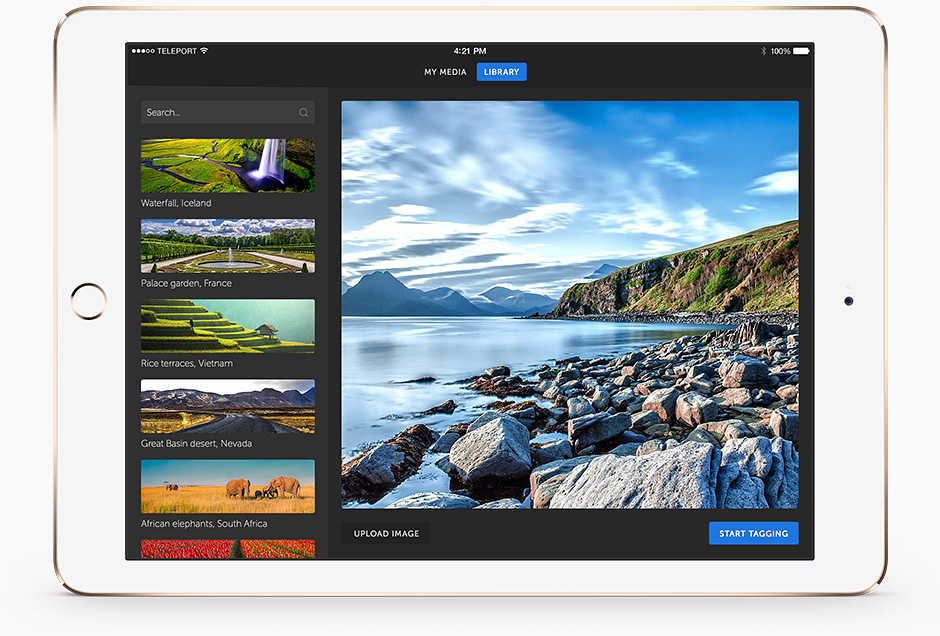
Global 360 learning environment: During 2017 all the thousands of VR lessons from around the world will connect into a global learning environment that can be accessed with any laptop or mobile device.
Professional image library: Teleport 360 Editor includes a collection of hundreds of curriculum-aligned professional photographs. For example, students can choose to visit any capital city in the world, or even state capitals in the US. This is a wonderful experience, even if you are just viewing the images from your computer or tablet!
Low price per student: The Premium Teacher account includes 200 students, and the price per students is 60 cents. All the students can access and use the image library, or upload their own photos. Schools who want to activate ThingLink for a group of teachers or the entire school, can contact us about a school account.
Most of the students’ perceive VR to be all about games. How can this perception be corrected?
Your students are right. Console VR is still mostly about games and entertainment. But mobile VR is a window to the next generation internet that we will use the same way as we use the web today: for search, social, learning, entertainment and shopping. It is just more visual, and the navigation in the 360 web will be different.
It is true that the console VR experiences are more impressive than mobile VR, but it is also good to remember that as exciting as it is to be standing on a ledge atop a huge skyscraper, or meeting with a T-Rex, even the most stunning VR experience as such will not necessarily teach you anything. The goal of VR in the classroom, like I mentioned, is to support the development of higher order thinking skills that in education are best applied to solving real-world issues.
Can human bodies and minds cope with VR? How?
This is a constant challenge for console VR game developers, and there are many studies showing that people feel sick in a moving computer generated environment.
Interactive 360 images and videos offer a less daunting way to approach virtual reality as it projects places in the real world. For example, we see schools from Hawaii to Finland creating fascinating virtual tours to historic places, nature, or even people’s homes. Students may record short explanations and add them to the image, making the images personal and engaging. When you view these stories in a VR headset, it feels as if you were there too.
What are the barriers to mass adoption of VR in education?
A tipping point for any new technology comes when it becomes possible for anyone to become a content creator. Most VR in the classroom solutions still focus on consuming stories created by others. This is a missed learning opportunity. Best learning happens during the planning and production of a virtual reality story: it develops the new 21st century literacy, a combination of research, critical thinking and digital presentation skills. Three to five years from now, when 360 cameras will be integrated to smartphones and tablets with automated image/video augmentation, we will be moving to a new kind of immersive web with virtual learning assistants.
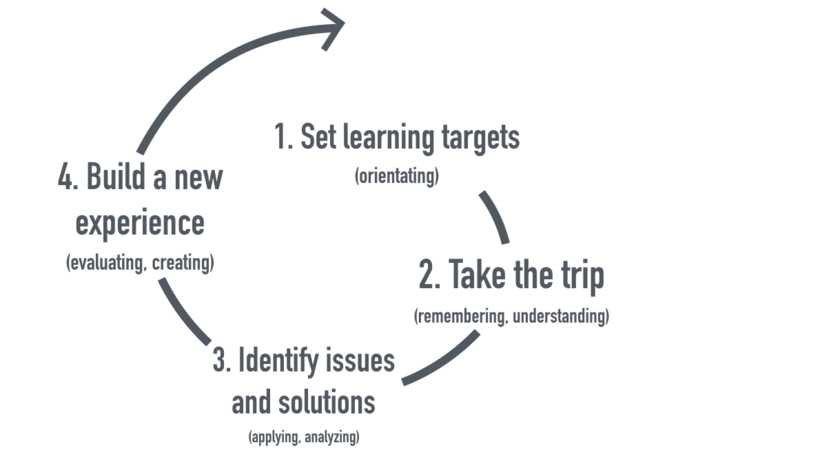
Can you share a framework for a lesson plan?
360 degree photos and videos can greatly support learning through contextual orientation. They can transform abstract global or local concepts into observable practical settings anywhere in the world, and this way, contribute to understanding and solving real-world problems. Here is a simple framework we have used for a lesson plan:
1. SET LEARNING TARGETS:
Introduce questions you want students to think about during the virtual experience.
2. SELF-PACED EXPLORATION:
Let students explore the virtual field trip materials at their own pace, at school or at home.
3. IDENTIFY ISSUES AND SOLUTIONS:
Develop higher level thinking skills by providing students an opportunity to collaboratively develop solutions for issues they have identified during the field trip.
4. DEMONSTRATE LEARNING:
Let students demonstrate their learning by editing or creating new virtual field trip materials that include their own observations and solutions.
About the Author:

Ulla Engestrom is the founder and CEO of ThingLink, a platform for augmenting images, video and 360 media with additional information. Engestrom started her company as a doctoral student in education at the University of Helsinki, Finland, where she got interested in the role of hyperlinked images in web browsing and learning. Today thousands of businesses and 2.5 million students and teachers from elementary schools to universities worldwide use ThingLink to create interactive maps, infographics, 360 degree virtual tours and lessons. Focusing on the future of immersive learning and mobile VR, Ulla Engestrom lives in Palo Alto, California, with her husband and three children. Engestrom is a Huffington Post contributor, and an advocate of global women’s rights.
Ulla's photo credit: Vincent Desailly
This article was originally published in the July 2017 issue of ScooNews magazine. Subscribe to ScooNews Magazine today to have more such stories delivered to your desk every month.
You may like
-
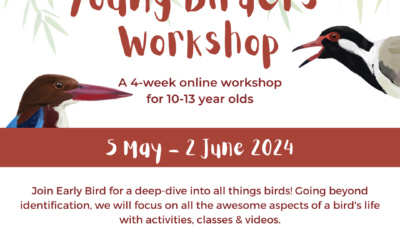

Young Birders’ Workshop Opens Registration for Children Aged 10-13 Years
-
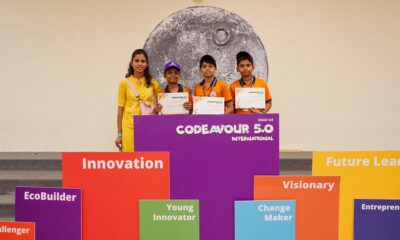

STEMpedia Successfully Completed Codeavour 5.0- India’s National Innovation Fest
-


Reviving School Education: Countering the Coaching Centre Dominance
-


CBSE to Initiate Pilot for National Credit System in Grades 6, 9, and 11
-


The Role of Marketing in Education: Navigating the New Educational Landscape
-


From Overwhelmed to Empowered: Strengthening Educator Skills for Success
-
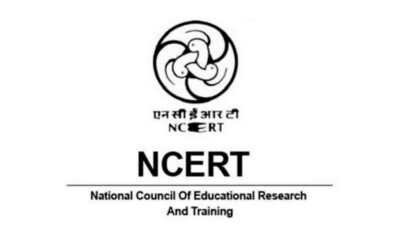

NCERT Introduces Bridge Month Programme for Class 6 Amid Textbook Transition
-


Indian Embassy Advocates for India-US Collaboration in Education Sector
-


Nurturing Healthy Behaviors: The Role of Schools in Shaping Health-Conscious Citizens
-


CBSE Updates Exam Structure for 11th & 12th Class; Concept-based Questions Now 50% of Weightage
Knowledge
Young Birders’ Workshop Opens Registration for Children Aged 10-13 Years
Published
9 hours agoon
April 16, 2024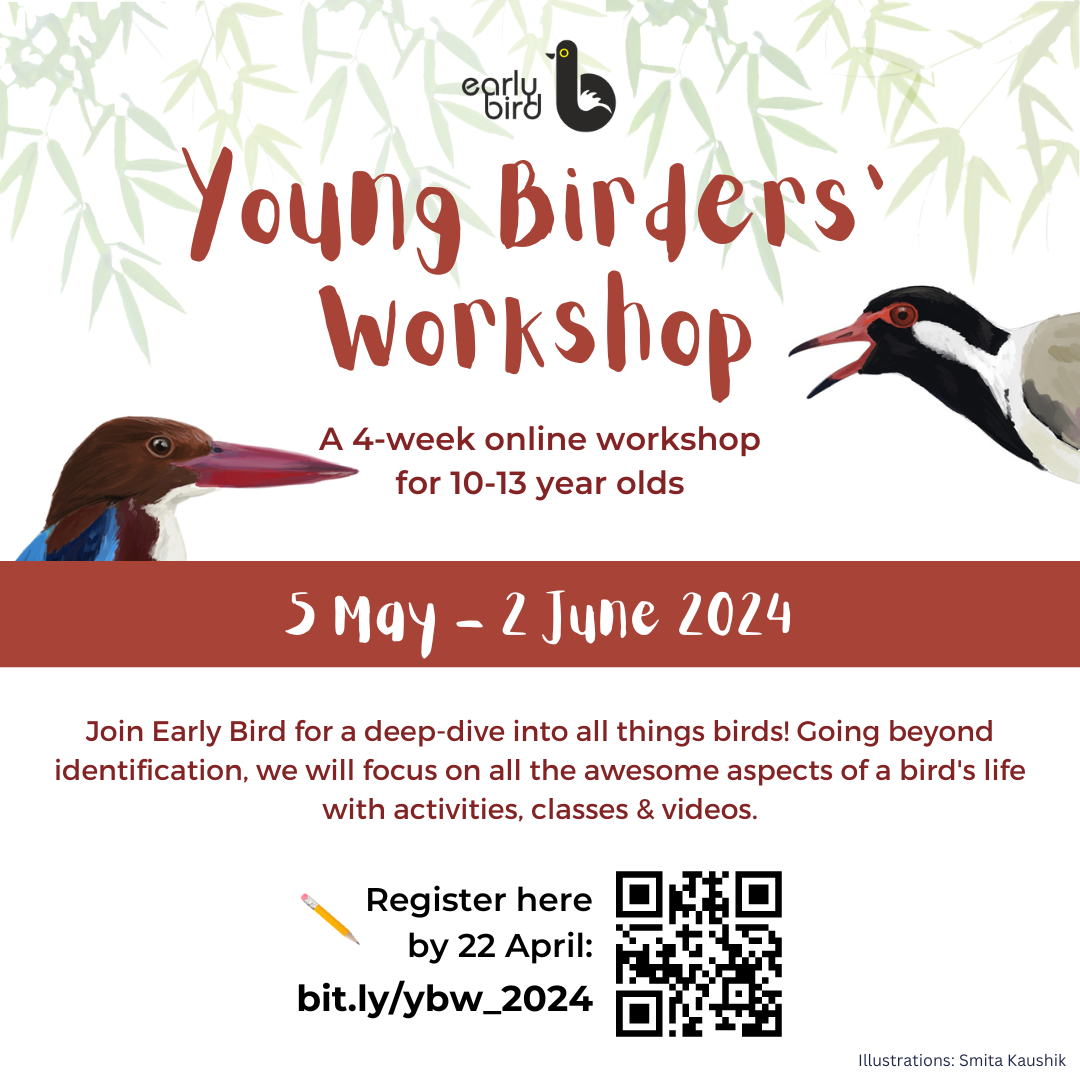
Early Bird, a not-for-profit initiative by the Nature Conservation Foundation, has announced the launch of an online birdwatching workshop tailored specifically for young enthusiasts aged 10-13 years. As birdwatching gains popularity across India, Early Bird aims to deepen young birders’ understanding of their natural surroundings, beyond merely ticking off bird names from their lists.
Set to commence during the summer holidays, this 4-week intensive programme will explore various themes through online sessions that combine multimedia, guided interactions, and lively discussions. These weekly live sessions will be held on consecutive weekends, each supplemented by an illustrated activity sheet that encourages participants to engage with and observe the green spaces around their homes.
The workshop is designed not only to educate but also to foster a deeper appreciation and awareness among children of the ecosystems they inhabit. “The workshop has changed our lives so much. We have found around 30 bird varieties around our house which we were completely unaware of,” shared Rupinder Kaur, a parent of a participant from previous workshops.
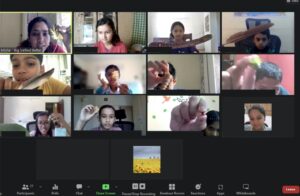
“My son never journaled or made notes. Now, he has started noticing everything when we go out to walk and wants to carry his journal. He has always hated writing but now carries his book and pencil and is ready to make notes. This workshop has made a difference to the way he looks at things. Quite enlightening. Has a lot to ask and share.“ said another participant’s parent.
While the workshop itself is free to attend, there is a nominal fee of Rs. 800 for materials, ensuring that all participants have access to the necessary resources to fully benefit from the experience.




Registrations for the workshop are now open and can be accessed through the link provided here. This initiative aims to be an enlightening experience, allowing young minds to discover and connect with the biodiversity that exists right in their backyards.
Early Bird continues to dedicate itself to bringing children closer to nature through educational content, training educators, and direct outreach, fostering a new generation that values and conserves our natural world.
Education
The Role of Marketing in Education: Navigating the New Educational Landscape
Published
6 days agoon
April 10, 2024
In an increasingly competitive and interconnected world, the concept of marketing, once synonymous with businesses and industries, has found its place within the realm of education. As educational institutions vie for attention amidst a cacophony of voices, the need for strategic marketing and public relations (PR) efforts has become paramount. While the moral implications of marketing in education may spark debate, there is a compelling argument for incorporating marketing concepts into the educational curriculum, equipping students, teachers, and parents with the knowledge and skills to make informed decisions in an ever-evolving educational landscape.
Gone are the days when educational institutions relied solely on their academic prowess to attract students. In today’s digital age, where information is abundant and attention spans are fleeting, the ability to cut through the noise and communicate effectively has become a prerequisite for success. From crafting compelling brand narratives to leveraging social media platforms, educational institutions are embracing marketing strategies to enhance their visibility and appeal to prospective students and stakeholders.
However, the incorporation of marketing into the educational sector extends beyond mere promotional efforts. At its core, marketing is about understanding the needs and preferences of your target audience and delivering value accordingly. By teaching marketing concepts to students, educators empower them with critical thinking skills and an understanding of consumer behaviour, enabling them to navigate the complex marketplace of ideas and opportunities.
Moreover, marketing education goes beyond the classroom, extending its reach to teachers and parents alike. Educators, tasked with shaping the minds of future generations, can benefit from an understanding of marketing principles to engage students more effectively and create meaningful learning experiences. Similarly, parents, as key stakeholders in their children’s education, can make more informed decisions about school choice and educational resources by understanding the marketing strategies employed by educational institutions.
Critics may argue that the commodification of education undermines its intrinsic value and fosters a culture of competition at the expense of collaboration. While these concerns are valid, it is essential to recognize that marketing, when approached ethically and responsibly, can serve as a powerful tool for positive change. By promoting transparency, accountability, and accessibility, marketing can help bridge the gap between educational institutions and the communities they serve, fostering a culture of trust and mutual respect.
The integration of marketing concepts into the educational curriculum represents a paradigm shift in how we approach education in the digital age. By equipping students, teachers, and parents with the knowledge and skills to navigate the complexities of the modern educational landscape, we empower them to make informed decisions and drive meaningful change. As we embrace the potential of marketing in education, let us remain mindful of its ethical implications and strive to harness its power for the greater good.
Education
From Overwhelmed to Empowered: Strengthening Educator Skills for Success
Published
6 days agoon
April 10, 2024
In the corridors of any classroom, teachers stand as pillars of guidance, tasked not only with imparting knowledge but also with nurturing the holistic development of their students. However, the onerous burden of managing a multitude of responsibilities within resource-constrained environments poses a formidable challenge, underscoring the urgent need for enhanced teacher training programmes.
At the heart of this challenge lies the staggering class sizes prevalent in Indian schools. With classrooms often overflowing with 35 or more students, the task of catering to diverse learning needs while maintaining order can seem insurmountable. Effective classroom management techniques, tailored to accommodate large cohorts, are essential for fostering a conducive learning environment and mitigating stress for both teachers and students.
Moreover, the complexity of the modern educational landscape necessitates a multifaceted approach to teaching. From addressing academic gaps to promoting socio-emotional well-being, educators are expected to wear multiple hats, often without adequate training or support. Enhanced teacher training programmes must equip educators with the pedagogical tools and strategies necessary to navigate this intricate web of responsibilities effectively.
Central to the need for better teacher training is the imperative of managing workload and stress. The relentless demands of completing the curriculum, crafting assessments, and addressing administrative tasks can take a toll on educators’ mental health and overall well-being. By providing teachers with comprehensive training in stress management techniques, time management strategies, and self-care practices, we can empower them to strike a balance between professional duties and personal wellness.
Addressing the point of the topics that should be touched upon, these teacher training programmes must encompass modules on effective assessment practices and differentiated instruction. By equipping educators with the skills to design assessments that cater to diverse learning styles and abilities, we can ensure that every student receives the support they need to thrive academically. Similarly, training in differentiated instruction enables teachers to tailor their teaching methods to meet the individual needs of each student, fostering a more inclusive and equitable learning environment.
In addition to addressing immediate challenges, enhanced teacher training programmes must also focus on future-oriented skills and competencies. With rapid advancements in technology and pedagogy, educators must be prepared to adapt to changing educational landscapes and embrace innovative teaching methodologies. By providing training in digital literacy, collaborative learning, and project-based instruction, we can empower teachers to harness the potential of emerging technologies and create engaging learning experiences for their students.
Ultimately, the need for better teacher training is not merely a matter of professional development; it is a moral imperative. By investing in the growth and well-being of educators, we invest in the future of our nation. Because one teacher’s well-being will lead to the well being of those 35 other kids in a classroom.
Education
Nurturing Healthy Behaviors: The Role of Schools in Shaping Health-Conscious Citizens
Published
1 week agoon
April 7, 2024
In the landscape of education, schools play a pivotal role far beyond the realms of academic learning; they are instrumental in moulding the future of our society by nurturing health-conscious citizens. This World Health Day, as we embrace the theme ‘My health, my right’, it’s crucial to spotlight the impact of school programs and policies in fostering healthy lifestyle choices among students. This endeavour not only aligns with students’ rights to education about health but also paves the way for a healthier, more informed generation.
In India, where diverse cultural backgrounds and socioeconomic statuses often dictate one’s access to health education and resources, schools have a unique opportunity to bridge these gaps. The Midday Meal Scheme, one of the largest school nutrition programs globally, serves as a sterling example. By providing nutritious meals to children in government and government-aided schools, it aims not just to combat hunger but to promote nutritional education and healthy eating habits among young learners. This initiative directly impacts the health and educational outcomes of approximately 115 million children across the country, showcasing the powerful role schools can play in shaping health-conscious behaviours.
Furthermore, the Government of India’s Rashtriya Kishor Swasthya Karyakram (RKSK) program emphasizes the importance of adolescent health, targeting the 253 million adolescents in the country. RKSK aims to integrate health education into schools, covering critical areas such as nutrition, mental health, and substance misuse, thereby ensuring that young individuals are equipped with the knowledge and skills to make informed health decisions.
However, the journey doesn’t end with national programs. Individual schools across India are taking innovative steps to encourage healthy behaviours. For instance, several institutions have introduced yoga and meditation into their daily routines, recognizing the importance of mental well-being alongside physical health. These practices not only improve students’ concentration and stress management skills but also instill a lifelong appreciation for holistic health practices.
Moreover, environmental health has become a growing concern, with schools incorporating lessons on sustainability and the importance of preserving our planet for future generations. Initiatives like setting up organic gardens, recycling projects, and awareness campaigns on water conservation are becoming increasingly common, fostering an eco-conscious mindset among students.
Despite these strides, challenges remain. Access to quality health education and resources is not uniform across India’s vast and varied landscape, with rural and underprivileged communities often at a disadvantage. Addressing these disparities requires concerted efforts from policymakers, educators, and communities to ensure that every child, irrespective of their background, has the right to health education and the opportunity to grow into a health-conscious citizen.
As we observe World Health Day, it’s clear that schools are much more than places of academic pursuit. They are crucial battlegrounds in the fight for a healthier future, where informed, conscious choices are not just encouraged but ingrained. By continuing to develop and implement comprehensive health education programs, schools can truly honor the theme ‘My health, my right’, turning it from a vision into a reality for every student across India.
Knowledge
Sharing the spotlight: When parent and child take board exams together
Published
2 weeks agoon
April 5, 2024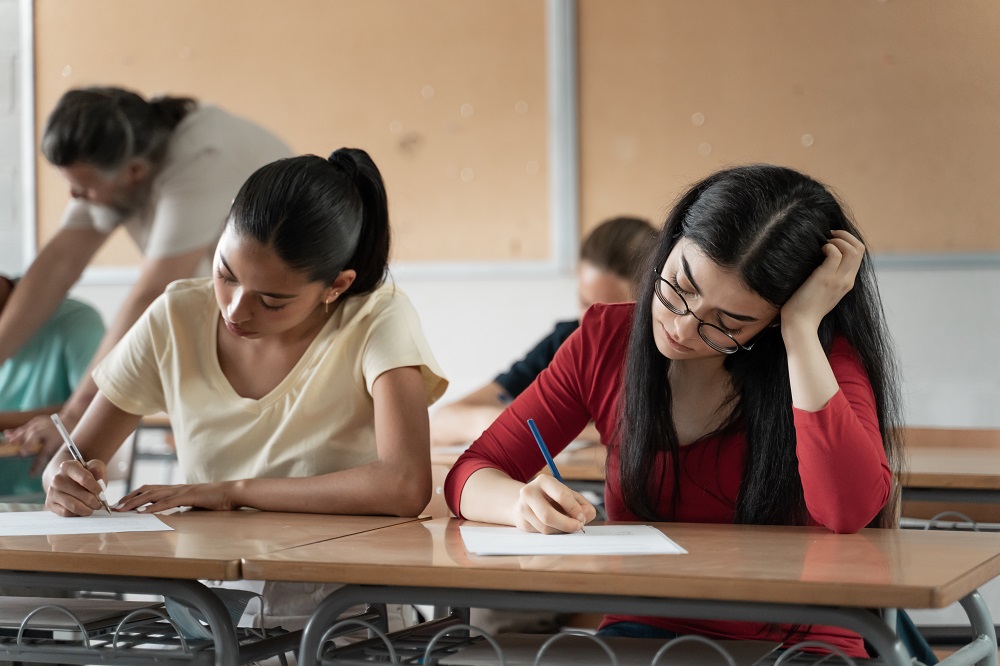
Board examinations are a kind of pressure cooker that often isolates kids and forces them to fight anxiety and expectations on their own. But picture yourself starting this important journey with your own parents, both of you aiming for academic success. This unconventional path, where parent and child become fellow students, unfolds a captivating narrative of shared aspirations, mutual support, and an inspiring exchange of motivation.
A Symphony of Support: Parent and Child, Hand in Hand
Consider the board exam season as a collaborative experience rather than a solo battle. For families in which both parents and children assume the risk together, that is the truth. A potent synergy is unlocked by this singular situation: unshakeable inspiration and reciprocal motivation. When a parent sees their child’s burning ambition, their own hidden aspirations are reawakened. Because of their common experience, they are able to provide advice based on practical knowledge, and the child’s enthusiasm turns into a motivating factor that others find infectious. In response, the child gets much encouragement. The parent becomes a study buddy, a champion in their corner, and a living testament to the fact that learning knows no age limit. This fosters a safe space for vulnerability, where anxieties are shared and triumphs celebrated with genuine empathy.
There are some people who serve as inspiration. Together, they disprove limiting notions and demonstrate that ambition has no boundaries. Their story becomes a beacon for others, inspiring them to follow their dreams and cherish lifelong learning regardless of age. This collaborative effort is about more than just grades; it’s a symphony of a support system where motivation becomes a team effort and rewards are shared. Their achievement is evidence of the transforming power of familial relationships, as they take center stage not as rivals but as comrades. Their tale will have an impact well beyond the exam room, encouraging others to start their own educational and personal development journeys alongside the people they care about.
Shared Spotlight, Separate Journeys: Finding Balance
Although there is no denying the advantages of parent-child board exam experiences, managing shared stress calls for skill. However, managing personal aspirations and expectations can be challenging. Children may feel that their own goals are overshadowed by comparisons, and parents may find it difficult to avoid them. Keeping distinct identities becomes essential.
Practicing healthy boundaries enables success. Create dedicated study spaces, cultivate individual interests, and prioritize open communication. Recall that you are allies, not competitors. Respect each other’s unique paths and celebrate accomplishments. Growth is the focus of our shared journey, not grades, and it can only be achieved by respecting each other’s unique personalities.
The Rewards of a Joint Journey
Teenagers are frequently isolated on the board exam battlefield, forced to deal with challenges on their own. But imagine overcoming this obstacle with your parent by your side, experiencing triumphs and setbacks together. This collaborative approach opens up a wealth of benefits that go beyond personal accomplishments.
Each win becomes a collective celebration, etched in memory as a testament to shared effort. High fives after acing mocks, celebratory dinners after stellar results – these moments weave a tapestry of familial joy. On the other hand, failures present chances for mutual empathy. Late-night chats of support following a challenging test, words of encouragement following a low score—these mutual setbacks strengthen the network and create a lasting connection.
More than just academic results, this journey deepens family connections. Study sessions that last into the night become personal discussions that promote trust and open communication. Together, overcome obstacles strengthen the base of compassion and understanding, fostering an environment that is secure for open communication and vulnerability. This improved communication goes beyond the board exam experience and becomes an important life skill.
Ultimately, this shared endeavor is about more than just academics—it’s about creating lasting experiences, strengthening bonds, and promoting deeper dialogue. It’s a journey that makes an enduring imprint, a constant reminder that group accomplishments and the transforming power of support can result in bigger rewards than individual ones.
A Story Beyond Exams:
This is ultimately a story not just of exams and scores, but of a shared adventure in learning, growth, and unwavering support. It is proof of the power of inspiration and motivation, demonstrating that no matter our age or situation, we can reach our goals as long as we walk hand in hand with the people we love. Together, their spotlight emphasizes their personal journeys, the transformative power of familial bonds, and the limitless opportunities that present themselves when we choose to develop, learn, and dream together.
Authored By:
Tushar Chaudhari,
Executive Director,
Target Publications Pvt. Ltd.
Education
The Potential of an Entrepreneurial Development Programme for Primary School Students
Published
2 weeks agoon
April 2, 2024
Educators will find great value in discovering the potential of an Entrepreneurial Development Programme tailored for primary-grade students. Such a program aims to equip young learners with essential skills, mindset, and knowledge crucial for navigating an ever-evolving world. Participating in an Entrepreneurial Development Programme not only aids primary-grade students in developing life skills but also enhances their academic performance, laying a robust foundation for their future endeavors and personal development. Schools should explore how an entrepreneurial development programme can transform and help students reach their full potential by teaming up with education providers who specialize in this area.
Advantages of Entrepreneurial Development Programme for Young Students
In today’s fast-paced world, traditional educational methods alone may not adequately prepare students for future challenges. Entrepreneurial development programme designed for primary-grade students offer a host of benefits beyond conventional classroom learning.
First and foremost, these programs foster creativity and critical thinking skills in young learners. By presenting real-world problems and encouraging out-of-the-box thinking, such initiatives stimulate imagination and promote innovative problem-solving, thereby enhancing academic performance and imparting valuable skills applicable across various domains of life.
Furthermore, entrepreneurial development programme cultivates teamwork and collaboration skills essential for success in an interconnected world. Through group activities and projects, students learn effective communication, collaboration, and leveraging each other’s strengths, crucial not only for academic achievement but also for future professional endeavors.
Moreover, these programs instill a strong work ethic and sense of responsibility in students by engaging them in hands-on activities and practical exercises, providing firsthand experience in project management, decision-making, and problem-solving. Such experiences foster accountability and ownership, qualities vital for future leaders and entrepreneurs.
Participation in an entrepreneurial development programme also boosts self-confidence and resilience among students. By undertaking entrepreneurial activities and confronting challenges, students learn to believe in their capabilities and develop the resilience to overcome obstacles.
Additionally, these programs nurture leadership qualities by offering opportunities for students to take charge and lead peers, thereby developing the skills and mindset necessary for effective leadership.
Entrepreneurial skills promote a growth mindset, encouraging students to view failure as a learning opportunity and persist in the face of challenges, fostering a belief in their capacity to grow and improve is essential for navigating the uncertainties of the future.
Key Components of an Effective Entrepreneurial Development Programme
- To ensure the effectiveness of an entrepreneurial development programme for primary-grade students, several key components must be in place. Firstly, the program should have a structured curriculum covering various entrepreneurial topics, designed to be engaging and age-appropriate, with activities that inspire and challenge young learners, and should be continuous rather than sporadic workshops.
- Hands-on learning experiences should be integral to the program, allowing students to apply their knowledge and skills to real-world challenges, and fostering a deeper understanding of entrepreneurship.
- The involvement of mentors and industry professionals provides students with valuable perspectives, guidance, and inspiration, enhancing their learning experience.
- The program should include opportunities for assessment and self-reflection, empowering students to track their progress and take ownership of their learning journey.
- Finally, students should have the opportunity to document their projects, enabling them to showcase their ideas and experiences through e-portfolios.
Implementation of an Entrepreneurial Development Programme in Schools
Implementing an entrepreneurial development programme in schools requires careful planning and coordination. Key steps include researching and understanding the program, creating a clear vision aligned with the school’s mission and values, securing buy-in from stakeholders, forming a dedicated implementation team, providing comprehensive training and professional development, adapting the program to suit the school’s specific needs, setting clear goals and metrics, integrating the program into various aspects of school life, continuously evaluating its effectiveness, celebrating successes, ensuring sustainability, and staying connected with the broader entrepreneurial community for ongoing support and inspiration.
Entrepreneurial Development Programme for Primary-Grade Students
Kidspreneurship serves as exemplary models of the impact these initiatives can have. Kidspreneurship, an education service provider from Singapore, offers meticulously designed curricula, real-world challenges, industry mentorship, holistic assessment, and opportunities for students to develop e-portfolios, empowering them to become future leaders and entrepreneurs.
Headquartered in Singapore, Kidspreneurship works with schools globally to offer a high-quality plug-and-play platform and implementation support that allows schools to integrate entrepreneurship in their curriculum.
According to Swati Gauba, the Thinker in Chief and Founder, emphasis is placed not only on top-notch content and technology but also on execution, ensuring a stellar experience for educators and students alike while measuring impact at every stage of the implementation process. Click to know more about Kidspreneurship Programme for Schools
Edutainment
World Theatre Day: Let Theatre Arts Make Classroom’s Showtime Spectacular!
Published
3 weeks agoon
March 27, 2024
As we roll out the red carpet for World Theatre Day, celebrated every year on March 27, let’s shine the spotlight on the dazzling world of theatre arts in education—a realm where creativity knows no bounds, and every student gets a backstage pass to explore the endless facets of their personality. Theatre arts isn’t just about taking a bow on stage; it’s a grand production that includes acting, scriptwriting, directing, set design, costume creation, and even the magic of lighting and sound effects. It’s where the shy kid in class becomes a roaring lion, and the daydreamer directs their first masterpiece.

Diving into the eclectic mix that is theatre arts, students embark on a thrilling adventure into storytelling, embodying characters from realms far and wide. But wait, there’s more! Ever fancied crafting a world from scratch? Set design and costume creation offer a canvas for the wildest imaginations, turning dreams into tangible realities. And for the tech-savvy, lighting and sound effects provide the perfect playground to amplify the drama or set the mood. It’s like being the wizard behind the curtain, where a flick of the switch can transport the audience to another dimension.
But theatre arts in schools is more than a ticket to the creative Olympics; it’s a masterclass in life itself. Through the laughter of improvisation and the discipline of rehearsals, students learn the art of expression and the power of voice. Theatre teaches us to walk in others’ shoes, sparking empathy and understanding in a performance that extends beyond the stage and into the corridors of daily life.
And let’s not forget the standup comedians, the jesters of the modern age, who wield humour like a sword, cutting through tension and bringing light to the darkest rooms. Standup comedy, an exhilarating facet of theatre arts, schools students in the art of storytelling and the bravery of vulnerability, proving that sometimes, laughter truly is the best medicine.
Integrating theatre arts into the curriculum is like adding a pinch of magic to the mundane, transforming the classroom into a space where learning is an adventure, not a chore. It’s where students can be themselves (or someone else entirely) in a judgment-free zone, discovering their potential and pushing boundaries, one act at a time. Schools that embrace theatre arts offer students a safe space to explore their identities, confront societal issues, and express themselves authentically. Through theatre, students learn the importance of voice and agency, discovering their capacity to effect change in their communities and beyond.
So, as we celebrate World Theatre Day, let’s champion for theatre arts to take centre stage in schools. After all, in the grand theatre of life, we’re all players, and what better way to prepare for the world’s stage than by embracing the creativity, collaboration, and sheer joy of theatre arts? Here’s to the scriptwriters, the directors, the set designers, and the stars of tomorrow—may your light shine bright, both on and off the stage.
In the immortal words of Shakespeare, “All the world’s a stage,” and it’s high time we all play our part, ensuring that the wonders of theatre arts are not just an act, but a fundamental chapter in the story of education.
Education
Post-pandemic: Embracing Well-being in India’s Schools with My Guide Inside
Published
4 weeks agoon
March 21, 2024
My Guide Inside (MGI is a three-part, comprehensive, story-based well-being curriculum; it brings out the best in all learners. Students and adults who learn they operate from the inside-out report My Guide Inside principles change their lives. MGI Online classroom learning platform is created locally for Indian children and youth.
The History of MGI
The pandemic ended the trajectory of our education “world.” Full stop. We had completed My Guide Inside (MGI) classroom pilots but school abruptly pivoted to online and plans to implement MGI halted.
Silver Linings for MGI
Worldwide we became comfortable with Zoom and discovered that one’s humanity comes through. We met colleagues in the global community and confirmed MGI is a universal curriculum—beyond beliefs and culture. It became apparent that students were struggling to be isolated while learning online. In support of their well-being, we created Video on Demand (VoD) to enhance the MGI chapters. Now we see that VoD also supports English Language Learners. We had completed My Guide Inside face-face professional development series. Now we shifted the MGI series to be self-study online with opportunity for group discussions– accessible for free in any global community. Educators benefit from this professional learning and as a result are able live, learn and confidently share these profound MGI lessons.
3 Year Official Focus Group Report
MGI students from 2018 and 2021 were asked about MGI and a report was prepared. This report provides hope that there is a path to well-being even in challenging times.
Bonnie states, “The MGI principles are so universal and definitely ingrained just in a way that I live my life that, I almost don’t even need to go back and reflect specifically because it’s something that applies to every aspect of my reality.”
Lina states, “I think something I realized for myself during the pandemic is I gained focus… I think some other people I know and I care about deeply might not have had that same shift of focus … which I fully understand, and I have compassion for as they might not have had the same education as I had through My Guide Inside, so I’m very grateful…”
Connection with India
It’s always an honor to connect with Sandeep Dutt, Founder of Learning Forward India Foundation and the Good Schools Alliance (GSA). (Sandeep, Sir, and I met through HundrED, a global education innovation organization.) There’s an understanding that well-being is a foundation for success in all life’s domains. MGI is a GSA learning partner. We conducted our first online MGI professional development series with GSA educators.
Sukhpreet states, “I learned about consciousness. That is the biggest thing which I now am able to relate everything to when I’m teaching; I can help my students. This self-realization and again the discussions we had were wonderful … that’s the beauty of the MGI sessions.”
After meeting with local advisor, Jugjiv Singh, we determined to create MGI Online with Hindi vocabulary. MGI Online I, II, III for young kids, kids, and teens were expertly created by Jishnu Gupta and Supratim Kar at edTree. The pilot for MGI Online Book III with GSA student interns proved to be a rich ground for learning and sharing the MGI principles. The youth determined to continue! They showed tremendous leadership and became MGI student mentors in their school’s Life Skills 4 and Life Skills 9 courses.
Yashraj states, “I love these MGI sessions … What I have gathered from all of this is not dwelling in the past and that mind thought, and consciousness makes our reality, which we face now.“ His parents note, “Yashraj has been able to articulate his ideas in a more effective manner and proving to be a better orator with each passing day. His pressure handling skills have remarkably improved. We are seeing a paradigm shift in his approach towards day-to-day activities. This MGI program has been an excellent blend of cross-cultural learnings which are beyond local boundaries.”
Globally, and significantly in India, we are seeing the focus on well-being is necessary for our children and youth to experience success, especially post-pandemic. MGI Online principles align with the National Curriculum Framework (NCF) 2023: Well-being of individuals remains crucial for success in all aspects of life.
My Guide Inside principles benefit learners: mentally, behaviorally, academically, and socially. MGI is not prescriptive, it is descriptive, empowering youth “inside-out.” MGI principle-based “understanding” is a solid foundation for navigating our rather complex, beautiful world.
Authored By-
Christa Campsall,
Co-Author, My Guide Inside
Education
The Intersection of Happiness and Technology in Education
Published
4 weeks agoon
March 20, 2024
In today’s fast-paced world, the quest for happiness has taken a front seat in discussions about education. The International Day of Happiness, celebrated on March 20th, offers a perfect moment to reflect on how technology, often seen as a double-edged sword, can actually foster happiness and well-being within educational settings. For educators and stakeholders in the Indian education system, understanding this intersection opens avenues to create more inclusive, engaging, and mentally stimulating environments for students.
The digital era has transformed traditional educational paradigms, introducing tools that not only facilitate learning but also enhance the mental and emotional well-being of students. The integration of technology in education, when done thoughtfully, can lead to a harmonious balance between academic achievement and happiness. This balance is crucial in the Indian educational context, where the pressure to perform academically often overshadows the importance of mental health.
One of the most significant ways technology contributes to happiness in education is through the personalisation of learning. Digital platforms enable learners to progress at their own pace, explore their interests, and engage with content that resonates with their individual learning styles. This personalisation fosters a sense of autonomy and competence, key components of intrinsic motivation and happiness. Apps and online platforms offer interactive and gamified learning experiences that make education not just a task, but a joyous journey of discovery. The result is a more engaged and satisfied student body, eager to learn and less prone to the stress and burnout associated with traditional rote learning methods prevalent in many Indian schools.
Moreover, technology bridges the gap between the educational needs of diverse learners, including those with special needs, by providing accessible learning tools and resources. Digital accessibility tools such as speech-to-text software, interactive eBooks, and customisable learning interfaces ensure that every student has the opportunity to learn in a way that best suits their needs, promoting inclusivity and thereby enhancing overall happiness.
In addition to facilitating personalised and inclusive learning, technology plays a pivotal role in promoting positive mental health among students. Digital mindfulness and well-being apps have become increasingly popular in educational settings, offering guided meditations, breathing exercises, and stress management techniques. These resources are particularly valuable in the Indian educational landscape, where the stigma surrounding mental health often prevents students from seeking help. By integrating these tools into the daily routine, schools can cultivate a culture of mindfulness and emotional resilience, empowering students to manage stress and face challenges with a positive outlook.
Social-emotional learning (SEL) platforms leverage technology to teach empathy, emotional intelligence, and interpersonal skills, which are integral to students’ overall happiness and success. These platforms offer interactive scenarios and role-playing games that teach conflict resolution, empathy, and cooperation, skills as important as academic knowledge in today’s interconnected world. The emphasis on SEL reflects a broader understanding that education is not just about academic achievements but also about preparing students to lead fulfilling and happy lives.
The intersection of happiness and technology in education offers a promising path forward for the Indian education system. On this International Day of Happiness, let’s commit to integrating technology in ways that bring joy into learning and prepare students for a happy, resilient, and fulfilling future.
Knowledge
Empowering the next generation: How mentorship shapes the future of young women’s professions
Published
1 month agoon
March 8, 2024
Mentorship acts as a cornerstone in empowering women across diverse professional landscapes. Studies reveal a strong correlation between mentorship and positive career outcomes for women. Using studies and real-world examples, this article talks about how mentoring shapes women’s career prospects.
Bridging the Gender Gap: The Power of Role Models
According to a 2021 study by McKinsey & Company and Lean In, women who have mentors are more likely to advance in their careers than those who don’t. This emphasizes how important role models are. Through mentorship, mentees are encouraged to believe that “if they can do it, so can I” by seeing successful women in their area. They are thus motivated to go after big dreams and defy society norms that might have initially deterred them.
Breaking Down Barriers: Access to Networks and Resources
Mentorship transcends mere guidance; it unlocks valuable networks and resources. Mentors, often established professionals, can connect their mentees to crucial individuals and opportunities. A 2023 study by the Harvard Business Review found that women with mentors are more likely to be connected to senior leaders and receive critical career advice. These connections open doors to job opportunities, training programs, and industry knowledge, propelling women forward in their careers.
Building Confidence and Skill Development
Mentorship fosters professional development by providing constructive feedback and valuable insights. A research published in the Journal of Career Development also found that mentorship programs significantly increase women’s self-efficacy and confidence in their abilities. Through personalized guidance, mentors equip their mentees with the skills needed to excel in their chosen field. This tailored approach empowers women to navigate challenges, develop critical thinking skills, and become well-rounded professionals.
Real-World Examples: Paving the Way for Success
Mentoring has an impact that goes beyond statistics. Consider the narrative of Meta Platforms’ COO, Sheryl Sandberg. Susan Wojcicki, the former CEO of YouTube, became Sandberg’s mentor. Sandberg acknowledges Wojcicki’s crucial assistance and direction throughout her career. In similar way, former PepsiCo CEO Indra Nooyi has talked about the important influence her mentor Jack Welch had on developing her leadership style and helping her succeed. These illustrations demonstrate how mentoring can significantly alter the career paths of women in leadership roles.
Investing in the Future: A Collective Responsibility
Mentorship is not a one-sided endeavor. Moreover, It fosters a culture of learning and exchange, benefiting both mentors and mentees. Mentors gain valuable leadership experience, stay updated with industry trends through interactions with mentees, and contribute to building a more inclusive and diverse future within their organizations.
The future of various professions and the empowerment of women hinges on funding mentorship programs. While individuals can actively seek mentorship within their networks or through specialized channels, organizations can design structured programs that pair women with experienced mentors. Every effort, no matter how big or small, helps create a world in which women prosper and realize their full potential in all spheres of the workforce.
To conclude, mentoring serves as a spark for women’s professional empowerment. Through facilitating access to resources, networks, and positive role models as well as skill development, mentoring sets the stage for a day when women may successfully traverse a variety of professions and realize their full potential. Together, we can actively seek guidance and engage in mentorship programs to help establish a better future for women in the workforce.
Authored by:

Dr. Kalpana Gangaramani
Founder & Managing Director,
Target Publications Pvt. Ltd.
Newsletter

Young Birders’ Workshop Opens Registration for Children Aged 10-13 Years

STEMpedia Successfully Completed Codeavour 5.0- India’s National Innovation Fest

Reviving School Education: Countering the Coaching Centre Dominance
CBSE to Initiate Pilot for National Credit System in Grades 6, 9, and 11

The Role of Marketing in Education: Navigating the New Educational Landscape

From Overwhelmed to Empowered: Strengthening Educator Skills for Success

NCERT Introduces Bridge Month Programme for Class 6 Amid Textbook Transition

Indian Embassy Advocates for India-US Collaboration in Education Sector

Nurturing Healthy Behaviors: The Role of Schools in Shaping Health-Conscious Citizens

CBSE Updates Exam Structure for 11th & 12th Class; Concept-based Questions Now 50% of Weightage

Sharing the spotlight: When parent and child take board exams together

Rebalancing the Scales: The Urgent Call for Humanities in STEM-Dominated Curricula

Palette of Possibilities: Nurturing Creativity in Schools through Modern Art

Empowering Minds: The Journey of My Guide Inside with Christa Campsall

The Potential of an Entrepreneurial Development Programme for Primary School Students

FPSB India and IIM Bangalore Forge Strategic Partnership to Advance Financial Education

1 in 6 School-Age Children Face Cyberbullying: Calls for Immediate Action

GD Goenka Group To Establish 12 New Schools from April 2024

World Theatre Day: Let Theatre Arts Make Classroom’s Showtime Spectacular!

Lessons Beyond a Cricket Pitch: An IPL-Inspired School Curriculum

Post-pandemic: Embracing Well-being in India’s Schools with My Guide Inside

The Intersection of Happiness and Technology in Education

India-Bhutan Strengthen Ties: Focus on STEM Education

Life of My Father: Dr. Jagdish Gandhi, a Pioneer in Education

Jharkhand Introduces Innovative Schemes to Support Higher Education Aspirants

Life of My Father: Dr. Jagdish Gandhi, a Pioneer in Education

Post-pandemic: Embracing Well-being in India’s Schools with My Guide Inside

Mayo College Announces New Leadership

Empowering the Future: The Success of Beti Bachao Beti Padhao in Girls’ Education

Is Students’ Data in Safe Hands in a Digital World?

Central Government Sets New Framework for Coaching Centres

FPSB India and IIM Bangalore Forge Strategic Partnership to Advance Financial Education

Radio Broadcasting in Schools: Creating a Platform for Student Voices

India to recognise Farsi as a classical language under New Education Policy

Farewell to a Pioneer: Dr. Jagdish Gandhi’s Enduring Legacy in Education

Anticipating a Progressive Leap: The Education Sector’s Hopes for Union Budget 2024

Kerala Introduces ‘Water-Bell’ Initiative in Schools to Boost Hydration

Lexicon Schools Spark Innovation with STEAM Fest

The Need to Preserve Newspapers for Bias-Free Education

A Voice for All Ages: The Enduring Legacy of Ameen Sayani in Indian Education

Target Publications hosts workshop for grade 10th and 12th students of Snehasadan Shelter Homes and Reap NGO

Seth M. R. Jaipuria School launches CBSE School in Bhiwadi, Rajasthan

The Rising Leaders’ Summit 2024: A Timeless Learning for Future Educational Leaders

From 2025-26, Indian Students to Get Two Opportunities to Sit for Board Exams

International Women’s Day 2024: Are We Not Special?

ISRO Launches Young Scientist Programme 2024 for Budding Space Enthusiasts

Can Hindi Become the Next Global Language?

Teach for India Invites Applications for its 2024 Fellowship Program

Ministry of Women and Child Development Unveils National Curriculum Framework for Early Childhood Care and Education

World Theatre Day: Let Theatre Arts Make Classroom’s Showtime Spectacular!
SGEF2023 | Special Address by Rama Datt, Trustee, Maharaja Sawai Man Singh II Trust, Jaipur

ScooNews | After Movie | ScooNews Global Educators Fest 2023

Aftermovie | NIES2 UP Chapter | 21 Jan 2023

WEBINAR | Gamification in Education: How Digital Badges Can Boost Student Motivation and Engagement

ScooNews | WEBINAR| Importance of Physical Activity for Children at School | Plaeto

SCOONEWS | WEBINAR | WHY DIGITIZING YOUR SCHOOL IS A MUST | TEACHMINT

Keynote Address | Lakshyaraj Singh Mewar

Anurag Tripathi, Secretary, CBSE at SGEF2022

How schools can nurture every student’s genius

Aftermovie | SGEF2022 | Jaipur

Li Andersson | Minister of Education | Finland

Anurag Tripathi, Secretary, Central Board of Secondary Education (CBSE) discusses NEP2020

ScooNews | Early Ed Asia 2019 | Aftermovie
#PodarECEconf : Pursuing quality ECE

#CBSE Class XII #Results #Highlights

The interesting story of India’s educational system | Adhitya Iyer

A young scientist’s quest for clean water

The Danger of Silence: Clint Smith

National Digital Library of India is an initiative by HRD Ministry

Remembering Kalpana Chawla on her birthday!

Message from Sadhguru for Students!
Message from Sadhguru for Students!

The Untapped Genius That Could Change Science for the Better

Eddy Zhong: How school makes kids less intelligent TEDxYouth@Beacon

#TEDxCanberra : What if every child had access to music education…
Trending
-

 Inspiration1 month ago
Inspiration1 month agoLife of My Father: Dr. Jagdish Gandhi, a Pioneer in Education
-

 Education4 weeks ago
Education4 weeks agoPost-pandemic: Embracing Well-being in India’s Schools with My Guide Inside
-

 Education3 months ago
Education3 months agoMayo College Announces New Leadership
-
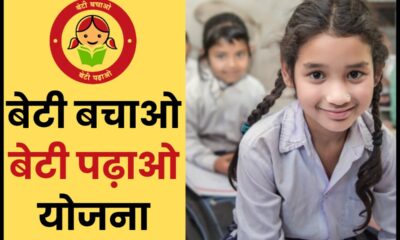
 Education3 months ago
Education3 months agoEmpowering the Future: The Success of Beti Bachao Beti Padhao in Girls’ Education
-

 Knowledge3 months ago
Knowledge3 months agoIs Students’ Data in Safe Hands in a Digital World?
-
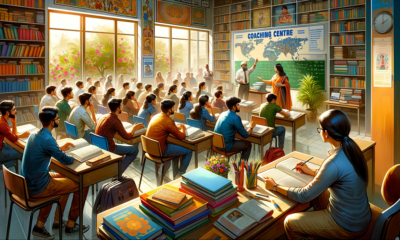
 Education3 months ago
Education3 months agoCentral Government Sets New Framework for Coaching Centres
-
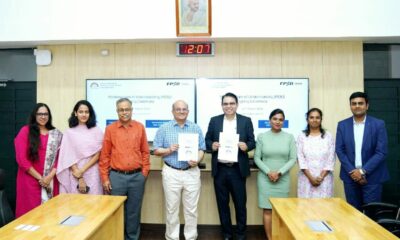
 Education3 weeks ago
Education3 weeks agoFPSB India and IIM Bangalore Forge Strategic Partnership to Advance Financial Education
-
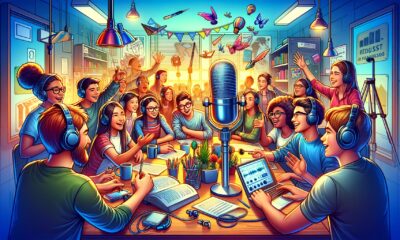
 Education2 months ago
Education2 months agoRadio Broadcasting in Schools: Creating a Platform for Student Voices
-

 Education3 months ago
Education3 months agoIndia to recognise Farsi as a classical language under New Education Policy
-

 Education3 months ago
Education3 months agoFarewell to a Pioneer: Dr. Jagdish Gandhi’s Enduring Legacy in Education




